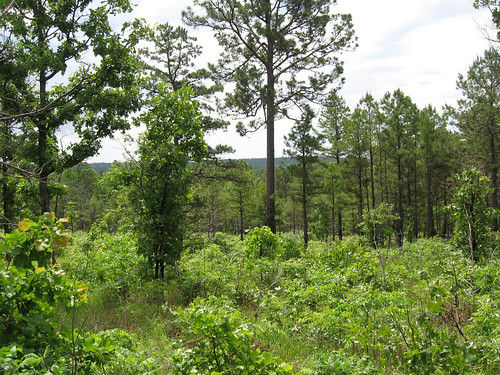
(This post was written by George Geissler, State Forester of Oklahoma Forestry Services)
Forest Action Plans represent the first-ever comprehensive assessment of America’s forest resources across all lands—public, private, rural, and urban—and offer proactive strategies that state forestry agencies use to conserve, protect and enhance the trees and forests we depend on.
The Forest Action Plans are invaluable at a time when tree mortality is on the rise due to disease and invasive pests; wildfires continue to increase in size and intensity; and forests are being permanently converted to non-forest uses at a rate of one million acres per year. These assessments help state forestry agencies employ a variety of tools for protecting and conserving forests and the benefits they provide to people, from quarantines related to invasive species, to practices to reduce hazardous fuels buildup, to enhanced landowner outreach and education on sound forestry practices.
For the past five years, Oklahoma has used this strategy to reduce the risk of catastrophic wildfire and educate the public about healthy forests. Implementation of Oklahoma’s Forest Action Plan demonstrates the need for state agencies to work with the U.S. Forest Service to use all of the tools at their disposal to achieve landscape scale restoration, reduce the risk of catastrophic wildfire and educate the public on effective land management.
Many of Oklahoma’s woodlands developed where natural or man-caused fires were essential in regenerating new trees, controlling invasive species and improving overall forest health. As the state developed and populations grew, landscape-level fires became much less common.
The lack of fire in Oklahoma has resulted in overstocking, a proliferation of invasive plants and lack of regeneration of native species.
Oklahoma’s Forest Action Plan identifies three special landscapes of concern, two of which—shortleaf pine and the cross timbers—developed with fire and where focused efforts are needed. To help address this need, the Forest Action Plan outlines a strategy for Oklahoma Forestry Services’ prescribed burning program.
Following legislative approval and new statutory authority, a Forestry Services work group developed administrative rules and program guidelines. Agency foresters and firefighters initiated the first turnkey prescribed burning services in eastern Oklahoma in 2013, and greatly expanded the program in FY2014.
Oklahoma partnered with Arkansas and obtained a U.S. Forest Service FY2014 Competitive Grant for a shortleaf pine restoration burning initiative. This shortleaf pine grant builds upon the FY2010 shortleaf pine initiative grant and also raised awareness of shortleaf pine. As a result of these efforts, there is high interest in prescribed burning for shortleaf restoration on nearly 20,000 acres of private land.
Expanded state capacity in prescribed burning also helped with deliverables for the FY2012 Cross Timbers grant. In FY2014, Forestry Services completed Forest Stewardship Plans for the city of Sand Springs on the 1,360-acre Keystone Ancient Forest and for the City of Henryetta’s Nichols Park. Both forests are dominated by Cross Timbers woodlands in need of management. Forestry Services personnel will conduct demonstration burns on these properties in FY2015, resulting in improved forest conditions and a better informed citizenry.
Support from these federal grants helped Oklahoma improve the health and resiliency on thousands of acres of the shortleaf pine and Cross Timbers landscapes, a critical element of the National Cohesive Wildfire Strategy.
The success of the State’s burning program, under the guidance of a forest ecologist, is leading to additional opportunities—initiation of burning on forestlands owned by the state parks system, the Bureau of Reclamation, Oklahoma City and numerous private lands; and a changing of attitudes within Oklahoma about burning for forestry purposes and its role as a valuable tool for land conservation.
This post is part of a series featuring the Forest Service’s work with partners on restoration across the country.

